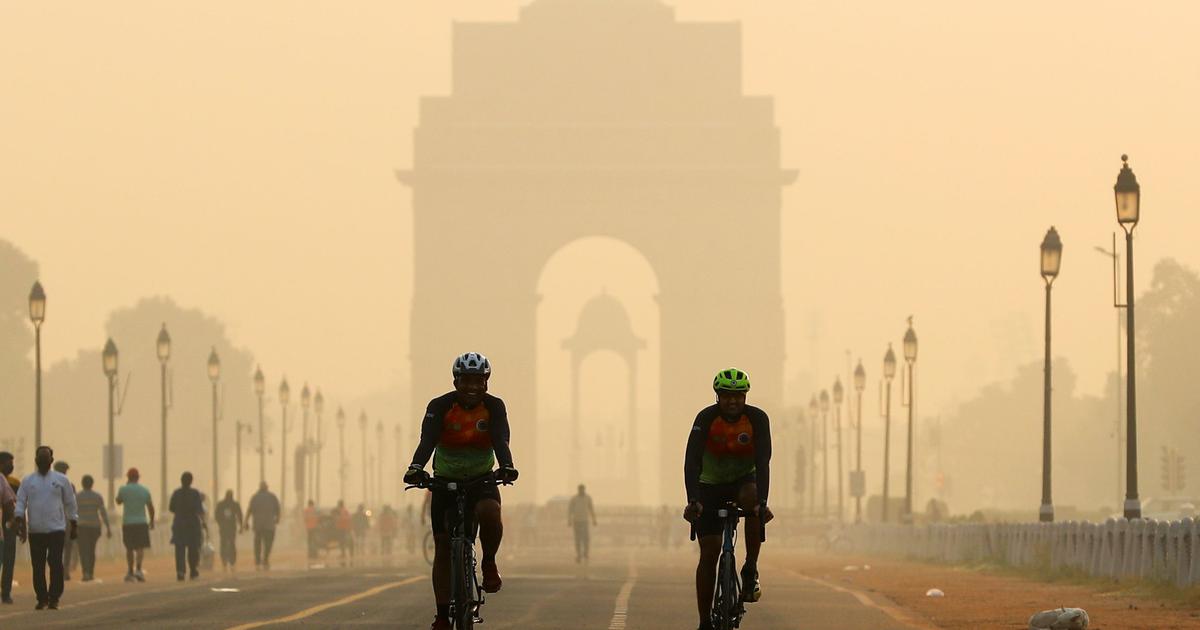
Table of Contents
Delhi-NCR AQI Level Worsen
As air quality in the national capital takes a spin, the Delhi-NCR region is bracing for additional restrictions to combat worsening air pollution. On Sunday evening, amid dropping Delhi-NCR AQI Level the Indian government implemented GRAP-IV, the final stage of its air pollution control plan, bringing with it a slew of measures that include a ban on certain vehicle categories, a mandate for 50% of employees to work from home, and the potential closure of schools.
The Central Pollution Control Board’s data reveals that Delhi’s average Air Quality Index (AQI) skyrocketed to a staggering 463 at 3:00 pm, firmly placing it in the ‘severe’ category. The city has grappled with ‘poor’ to ‘severe’ AQI levels since late October, with the Central Pollution Control Board’s latest report categorizing the air quality as ‘severe’ as of 4:30 pm on November 5.
To address this alarming situation, an 8-point action plan, coordinated by the sub-committee for operationalization of the graded response plan, has been put into effect throughout the entire National Capital Region. In response to this, the Delhi government has called for an emergency meeting to discuss the situation.
Key measures outlined in GRAP-IV are as follows
An official order issued on November 5 dictates that only vehicles compliant with Bharat Stage VI emission norms, along with those operating on compressed natural gas (CNG) and electric batteries, will be allowed to enter Delhi from other states. This order effectively bans the entry of polluting trucks and commercial four-wheelers into the national capital.
These new norms have been immediately implemented, as the government activates stage-IV measures of the Graded Response Action Plan (GRAP). The GRAP comprises a set of measures designed to combat worsening air quality, crafted by the Centre’s Commission for Air Quality Management (CAQM).
- Truck Entry Restrictions: The entry of trucks, except those carrying essential goods or providing essential services, as well as all LNG/CNG/electric trucks, will be prohibited in Delhi.
- LCV Entry Restrictions: Light Commercial Vehicles (LCVs) registered outside Delhi, excluding Electric Vehicles (EVs) and CNG/BS-VI diesel vehicles, will not be permitted to enter Delhi unless they are transporting essential commodities or offering essential services.
- Ban on Diesel Vehicles: Diesel-operated Medium Goods Vehicles (MGVs) and Heavy Goods Vehicles (HGVs) registered in Delhi, except those carrying essential goods or providing essential services, will not be allowed to ply in the city.
- C&D Activity Ban: Civil and Demolition (C&D) activities will be prohibited in linear public projects such as highways, roads, flyovers, over-bridges, power transmission, pipelines, and more.
- School Closures: NCR State Governments and the Government of the National Capital Territory of Delhi (GNCTD) may decide to discontinue physical classes for students in classes VI to IX and class XI, shifting to online lessons.
- Work From Home: NCR State Governments/GNCTD will decide whether to allow public, municipal, and private offices to operate at 50% capacity, with the remaining employees working from home.
- Central Government Offices: The Central Government will consider permitting its employees to work from home.
- Additional Emergency Measures: State Governments may contemplate additional emergency measures, including the closure of colleges and educational institutions and the implementation of an odd-even vehicle registration number system.
Mumbai AQI Level Drops to ‘Poor’ Category
While Delhi grapples with its air quality crisis, Mumbai’s air quality remains in the ‘moderate’ category as of November 4. However, certain areas in the city have reported a dip in air quality to the ‘poor’ category, with Bandra Kurla Complex (IITM) recording an AQI of 210. Other areas such as Bandra Kurla Complex (MPCB), Borivali East (IITM), Borivali East (MPCB), Chakala-Andheri East (IITM), Chhatrapati Shivaji International Airport (T2), Kandivali East, and Worli have reported ‘moderate’ to ‘poor’ AQI levels. Most notably, Chembur, Colaba, and Deonar have raised alarms with AQI levels of 225, 220, and 259, respectively, classifying their air quality as ‘poor.’
These developments underline the critical importance of addressing air pollution in India’s major cities, with the health and well-being of residents at stake. The implementation of measures like GRAP-IV and the promotion of clean, compliant vehicles are crucial steps in the battle against air pollution, aiming to provide residents with cleaner, healthier air to breathe.
You can also read:
- Breaking News: PM Modi Extends PM Garib Kalyan Anna Yojana for 5 More Years – All You Need to Know
- Amazon Great Indian Festival 2023: Massive Deals on Smart Watches!
- Introducing the Vande Sadharan Train: Your Affordable and Comfortable Travel Option
- National Pension Scheme (NPS): Details, Eligibility, Tax Benefits, FAQs


3 thoughts on “Delhi-NCR AQI Level Tumbles Enforces GRAP-IV: Work From Home, Vehicle Bans, and School Closures”